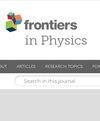Assessment of a method for manufacturing realistic breast lesions for experimental investigations
IF 1.9
3区 物理与天体物理
Q2 PHYSICS, MULTIDISCIPLINARY
引用次数: 0
Abstract
IntroductionThe development and optimization of novel diagnostic imaging prototypes heavily rely on experimental work. In radiology, this experimental work involves the use of phantoms. When testing novel techniques to demonstrate their advantages, anthropomorphic phantoms are utilized. The aim of this study was to investigate seven materials for 3D printing to replicate the radiological properties of breast lesions.MethodsTo achieve this objective, we utilized three fused filament fabrication materials, namely, polylactic acid (PLA), acrylonitrile butadiene styrene (ABS), and polyethylene terephthalate glycol (PET-G), along with resins such as White v4 Resin, Flexible 80A v1 Resin, Model v2 Resin, and Wax40 v1 Resin, to 3D print seven irregularly shaped lesions. These lesions were used to prepare a set of seven physical phantoms, each filled with either water or liquid paraffin, and one of the printed lesions. The phantoms were then scanned using a mammography unit at 28 kVp. Additionally, six computational breast phantoms, replicating the shape of the physical phantoms, were generated. These computational models were assigned the attenuating properties of various breast tissues, including glandular tissue, adipose tissue, skin, and lesions. Mammography images were generated under the same experimental conditions as the physical scans. Both the simulated and experimental images were evaluated for their contrast-to-noise ratio (CNR) and contrast (C).DiscussionThe results indicated that the studied resins and filament-based materials are all suitable for replicating breast lesions. Among these, PLA and White v4 Resin exhibited the densest formations and can effectively approximate breast lesions that are slightly less attenuating than glandular tissue, while ABS and Flexible 80A v1 Resin were the least dense and can represent fat-containing breast lesions. The remaining materials provided good approximations for malignant lesions. These materials can be utilized for constructing phantoms for experimental work, rendering the model a valuable tool for optimizing mammography protocols, ensuring quality control of mammography X-ray equipment, and aiding in the diagnosis and assessment of breast cancer.评估为实验研究制造逼真乳房病变的方法
引言 新型诊断成像原型的开发和优化在很大程度上依赖于实验工作。在放射学中,这种实验工作涉及到模型的使用。在测试新技术以展示其优势时,会使用拟人化的模型。本研究旨在研究七种用于 3D 打印的材料,以复制乳腺病变的放射学特性。为了实现这一目标,我们使用了三种熔丝制造材料,即聚乳酸(PLA)、丙烯腈-丁二烯-苯乙烯(ABS)和聚对苯二甲酸乙二酯(PET-G),以及白色 v4 树脂、柔性 80A v1 树脂、模型 v2 树脂和 Wax40 v1 树脂等树脂,3D 打印了七个不规则形状的病灶。这些病灶被用来制备一组七个物理模型,每个模型都装有水或液体石蜡,以及其中一个打印出来的病灶。然后使用乳腺 X 射线装置在 28 kVp 下对模型进行扫描。此外,还生成了六个与物理模型形状相同的计算乳房模型。这些计算模型具有不同乳腺组织的衰减特性,包括腺体组织、脂肪组织、皮肤和病变组织。在与物理扫描相同的实验条件下生成乳腺 X 射线图像。讨论结果表明,所研究的树脂和丝基材料都适用于复制乳腺病变。其中,聚乳酸和白色 v4 树脂的密度最高,可有效逼近衰减程度略低于腺体组织的乳腺病变,而 ABS 和柔性 80A v1 树脂的密度最低,可代表含脂肪的乳腺病变。其余材料都能很好地模拟恶性病变。这些材料可用于构建实验模型,使模型成为优化乳腺 X 射线摄影方案、确保乳腺 X 射线摄影设备质量控制以及帮助诊断和评估乳腺癌的重要工具。
本文章由计算机程序翻译,如有差异,请以英文原文为准。
求助全文
约1分钟内获得全文
求助全文
来源期刊

Frontiers in Physics
Mathematics-Mathematical Physics
CiteScore
4.50
自引率
6.50%
发文量
1215
审稿时长
12 weeks
期刊介绍:
Frontiers in Physics publishes rigorously peer-reviewed research across the entire field, from experimental, to computational and theoretical physics. This multidisciplinary open-access journal is at the forefront of disseminating and communicating scientific knowledge and impactful discoveries to researchers, academics, engineers and the public worldwide.
 求助内容:
求助内容: 应助结果提醒方式:
应助结果提醒方式:


